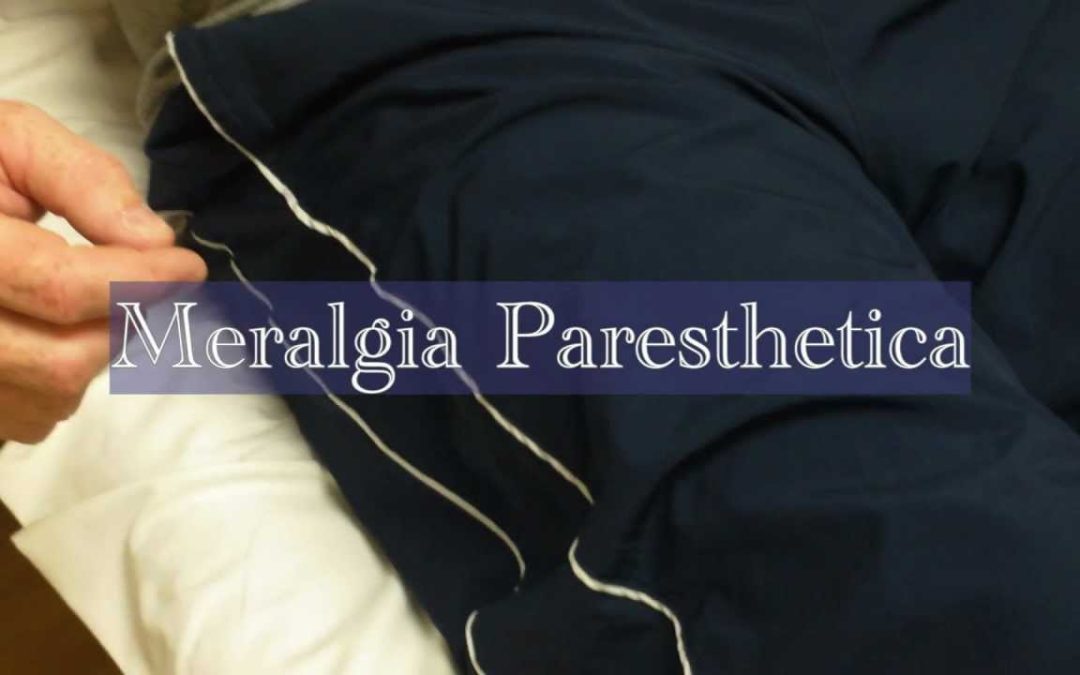According to the Mayo Clinic Online Meralgia Paresthetica is a condition characterized by tingling, numbness and burning pain in the outer thigh. The cause of meralgia paresthetica is compression of the nerve that supplies sensation to the skin surface in that area called the lateral femoral cutaneous nerve. Tight clothing, obesity, or weight gain, and pregnancy are common causes of meralgia paresthetica. However, meralgia paresthetica can also be due to local trauma or a disease, such as diabetes. In my neurology clinic I am asked to perform nerve conduction studies with electromyography (NCV/EMG) on patients suspected of having lumbar nerve root compression. This is particularly important because compression of the 5th lumbar nerve root will cause pain that radiates down the lateral thigh, and this can look a lot like meralgia paresthetica, or vice versa. I have seen many cases of meralgia paresthetica confused for an L5 radiculopathy. Of course, L5 radicular pain can often extend below the knee to the shin area and top of the foot. But real life experiences of pain and numbness are not always like the textbook. Furthermore, the treatment for the two conditions is completely different. In both cases lifestyle factors can be important in addressing the underlying causes, and persistence with physical therapy in this setting can resolve even the most remarkable disk herniations over time obviating the need for surgical intervention. This approach requires education and persistence on the part of our patients who naturally want the problem fixed sooner rather than later. However, there is a lot to be said for an intact spine when it comes to surgical and anesthesia-related risks, and risk of long term treatment failure (“failed back syndrome”). Even when the surgical site remains stable we often see spine problems above or below the surgical site because the root causes of the imbalance that lead to the problem in the first place have not been addressed. For meralgia paresthetica wearing loose clothing, losing weight, and non-invasive pain-controlling modalities offered by therapists may be helpful definitive treatment may require a nerve block or even ablation therapy to resolve the discomfort. In my practice I do not generally treat meralgia paresthetica with medication although the literature suggests this is an option. So the next time you are asked to provide therapy on someone with lateral thigh pain and numbness, and the referring provider has listed “lumbar radiculopathy” as the diagnosis, think about the possibility that your patient may actually be suffering from meralgia paresthetica.
Recent Posts
- Embracing Hope: Join the Parkinson’s Solutions Summit 2.0 for Empowering Insights and Community Support
- Brain Power: Navigating Neurological Exams with Dr. Ken Sharlin
- Restore Pillar: Unlock Your Best Self with Brain Tune Up!
- Neuropathy: Causes, Types, and Effective Treatment Options with Dr. Ken Sharlin
- Understanding and Managing Multiple Sclerosis

